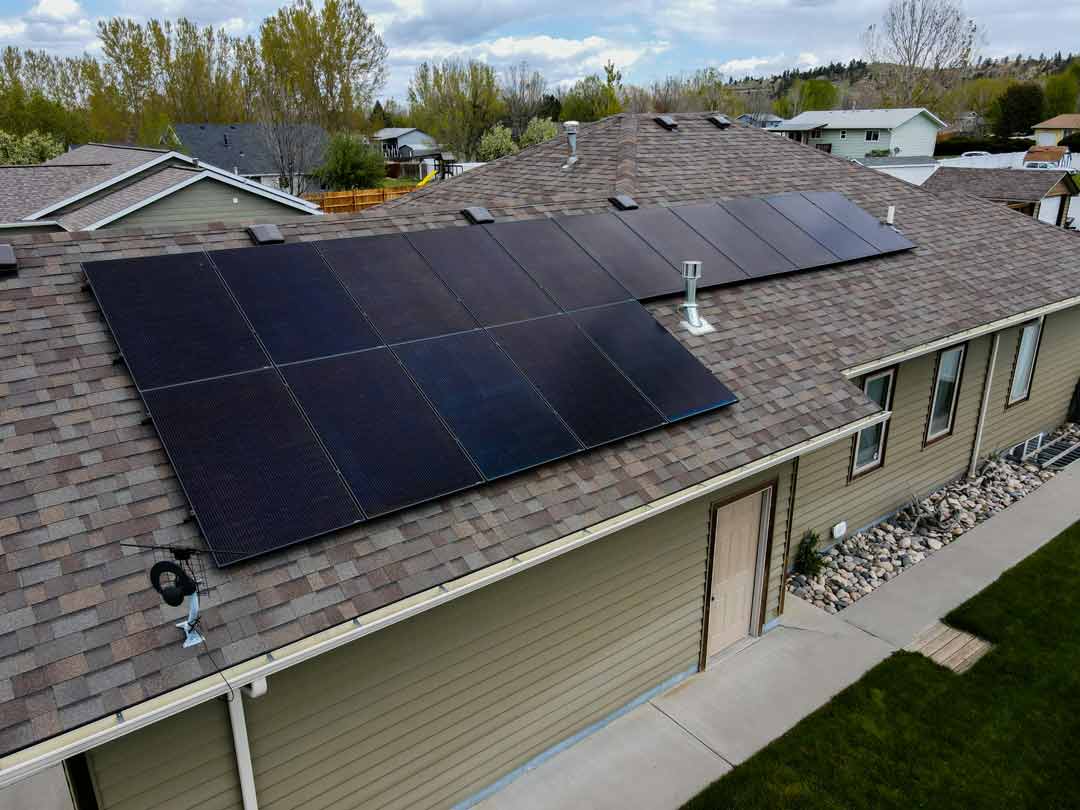Did you know that in 2021, 23.6 GW of solar energy was installed in the United States?!
Maybe you’re one of the thousands of homeowners considering residential solar to help save money and gain energy independence. But how exactly does this technology work?
There’s a lot of science behind utilizing the sun’s energy to power your home, so let’s break it down to the basics.
The Parts of a Residential Solar Energy System
The most visible part of any solar energy system are the solar panels. Pretty much every home solar installation will use photovoltaic (PV) panels. Photovoltaic just means that the silicon cells that make up the panel respond to UV light from the sun.
There are three main types of PV panels: monocrystalline, polycrystalline, and thin film. Out of these three, monocrystalline panels are the most efficient, although they might cost a little more. Then polycrystalline panels, which are usually mid-range for both efficiency and price.
Thin film solar panels are generally used for portable projects, like panels for a small solar battery or generator you’d take camping. While they’re often the cheapest option, they are also the least efficient.
Installed alongside the solar panels on a roof are inverters. These help take the electricity the panels are producing, and transfer it into the home’s electrical system. Inverters turn the DC (direct current) electricity panels produce into AC (alternating current) electricity that homes in the US use.
Finally, every professionally installed solar energy system is tied into the home’s electrical system with an automatic shut off. That way, if the grid ever goes down, your solar will shut off as well, and avoid any electricity being sent back onto a downed power line.
How Solar Panels Work with Your Home
So, once the inverters have done their job and your home is receiving power generated right on your roof, what happens?
First, the power will be used in your home for whatever energy needs are currently drawing power. That can be everything from televisions and lights, to less visible sources of energy usage like a refrigerator or hot water heater.
During particularly sunny days, or just when your home isn’t using much power, the extra energy would be sent back onto the grid or into a battery system.
For homes that are grid-tied and using net metering (NEM), when the excess energy is sent onto the grid, they’ll receive a credit as payment for helping to power their local energy grid. Then, during days where the home needs more power, they’re able to draw from the power grid without having to pay. A sort of on-grid, no maintenance battery back up.
What Does Residential Solar Cost?
Now that you’re familiar with the ins and outs of home solar, you might still be wondering what solar costs.
That depends on what type of solar you’re going with. For solar that is leased or part of a purchase power agreement, the upfront costs are usually minimal, but you also can’t claim any tax credits or incentives to help offset the costs you do have.
But how is the cost for a purchased or financed solar energy system determined?
First and foremost is the size of the project. A common misconception about solar is that the size of your home determines the size of your solar installation. In reality, the size of home is only one part of the equation. Also taken into consideration is the average monthly energy use of a home.
Building a solar energy system that meets the homeowner’s needs, and doesn’t massively exceed the amount of energy needed, is a delicate balancing act. By looking at the average monthly energy used, and finding out from the homeowners any plans to change how they use energy, a professional solar installer is able to design a system balanced between energy efficiency and cost-effectiveness.
Once the size of the system is designed, the cost then depends on price per watt. The price per watt will vary depending on where you live at both the state and city level. So a home in Portland, Oregon will have a different solar cost than one in Waterloo, Iowa.
Save with Purelight Solar
When you go solar with Purelight, you’re guaranteed savings with a system designed with your specific energy needs in mind.
Plus, our $0 down program is designed to help homeowners go solar with no money down!
Find out if your roof qualifies in less than 60 seconds.





